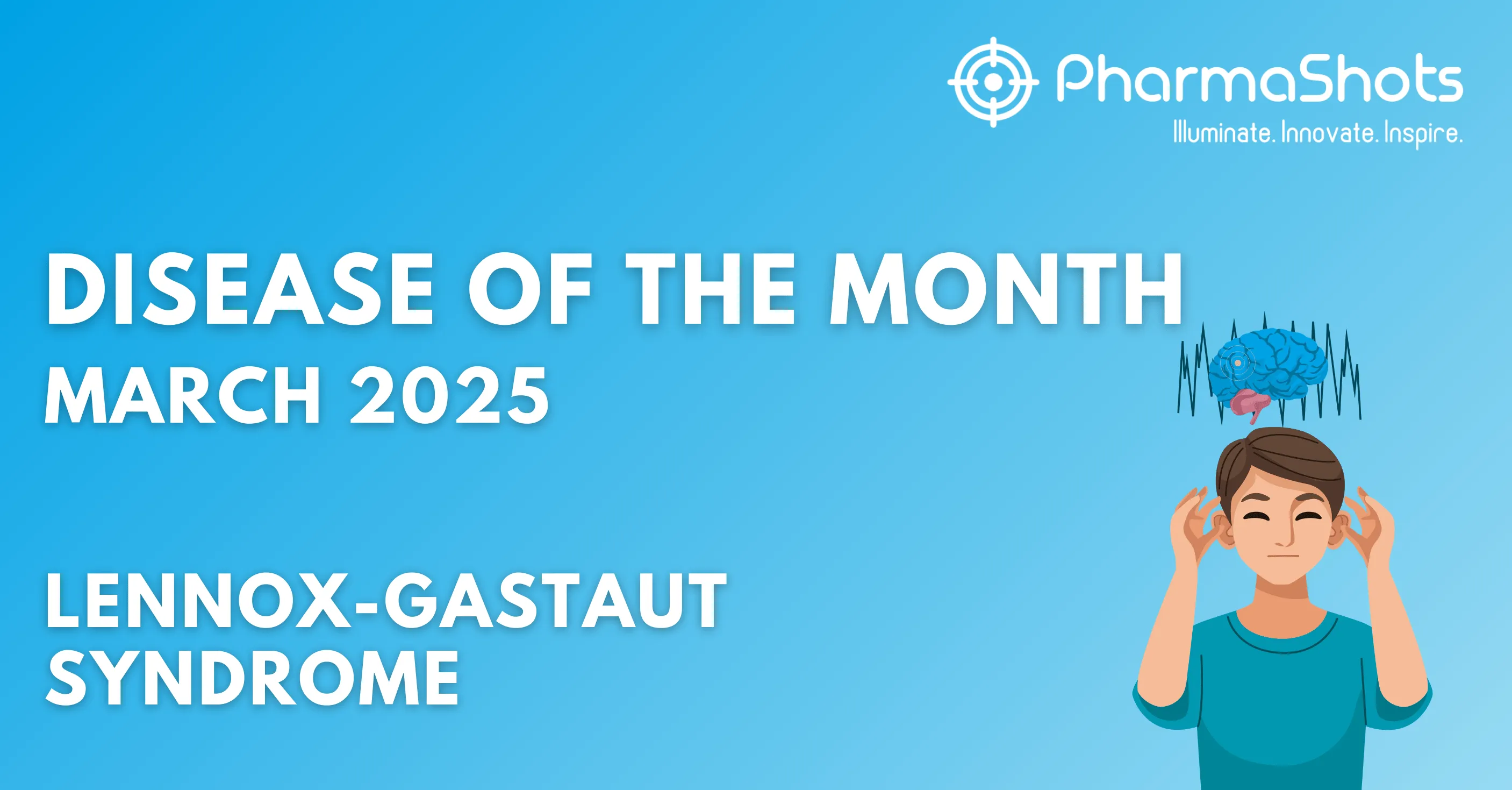
Disease of the Month - Ulcerative Colitis
Shots:
-
To keep our readers acquainted with several disease conditions, ongoing trials, and available treatment options, PharmaShots brings every month a detailed take on a particular disease after thorough research
-
Continuing the series for the disease of the month, PharmaShots presents a condensed report on Ulcerative Colitis, which causes inflammation and sores (ulcers) in the digestive system
-
May 19th is observed annually as World IBD Awareness Day, uniting people to fight against Ulcerative Colitis and Crohn's disease, known as inflammatory bowel diseases
Introduction1, 2, 3
An inflammatory bowel disease (IBD), ulcerative colitis causes inflammation and sores (ulcers) in the digestive system. The rectum and the innermost lining of your large intestine, commonly referred to as the colon, are affected by ulcerative colitis. The types of ulcerative colitis include Ulcerative proctitis, Proctosigmoiditis, Left-sided colitis, and Pancolitis
Though it can occur at any age, those between the ages of 15 and 30 years are more prone to develop ulcerative colitis.
Symptoms1, 2
The symptoms of ulcerative colitis include:
-
Severe Belly Cramps
-
Loss of appetite
-
Fatigue
-
Fever
-
Dehydration
-
Canker sores
-
Anemia
-
Skin sores
-
Pain or bleeding with bowel movements
-
Blood and possibly pus in the stools
-
Diarrhea, from only a few episodes to very often
-
Tenesmus (feeling like you have to poop but being unable to)
Diagnosis2
-
Blood tests: Anemia symptoms in blood may indicate bleeding in the colon or rectum.
-
Stool samples: Signs of infection, parasites and inflammation can be detected
-
Imaging tests: A specific kind of X-ray known as a barium enema to identify indications of colon inflammation. Indicators of colon inflammation can be seen on a CT scan or an MRI, particularly in cases of moderate to severe ulcerative colitis. Complications such as megacolon or perforation might be seen on an X-ray
-
Endoscopic tests: An endoscope is a thin, flexible tube with a tiny camera used to examine the stomach, esophagus, and small intestine
-
Biopsy: A tissue sample is taken from the colon for analysis. This is an important step for early detection and colorectal cancer prevention.
Epidemiology4, 5
In Northern Europe and North America, there is a notably high occurrence and prevalence of inflammatory bowel diseases worldwide. The incidence of ulcerative colitis ranges from 9 to 20 cases per 100,000 individuals annually, with a prevalence of 156 to 291 cases per 100,000 individuals each year.
As of 2023, the global estimate for the prevalence of ulcerative colitis reached 5 million cases, and there is a trend of increasing incidence on a global scale.
Market Size9
In 2023, the ulcerative colitis treatment market size reached $6.18B and within 9 years (by 2032) it is expected to increase by $11.08B at a CAGR of 6.7%.
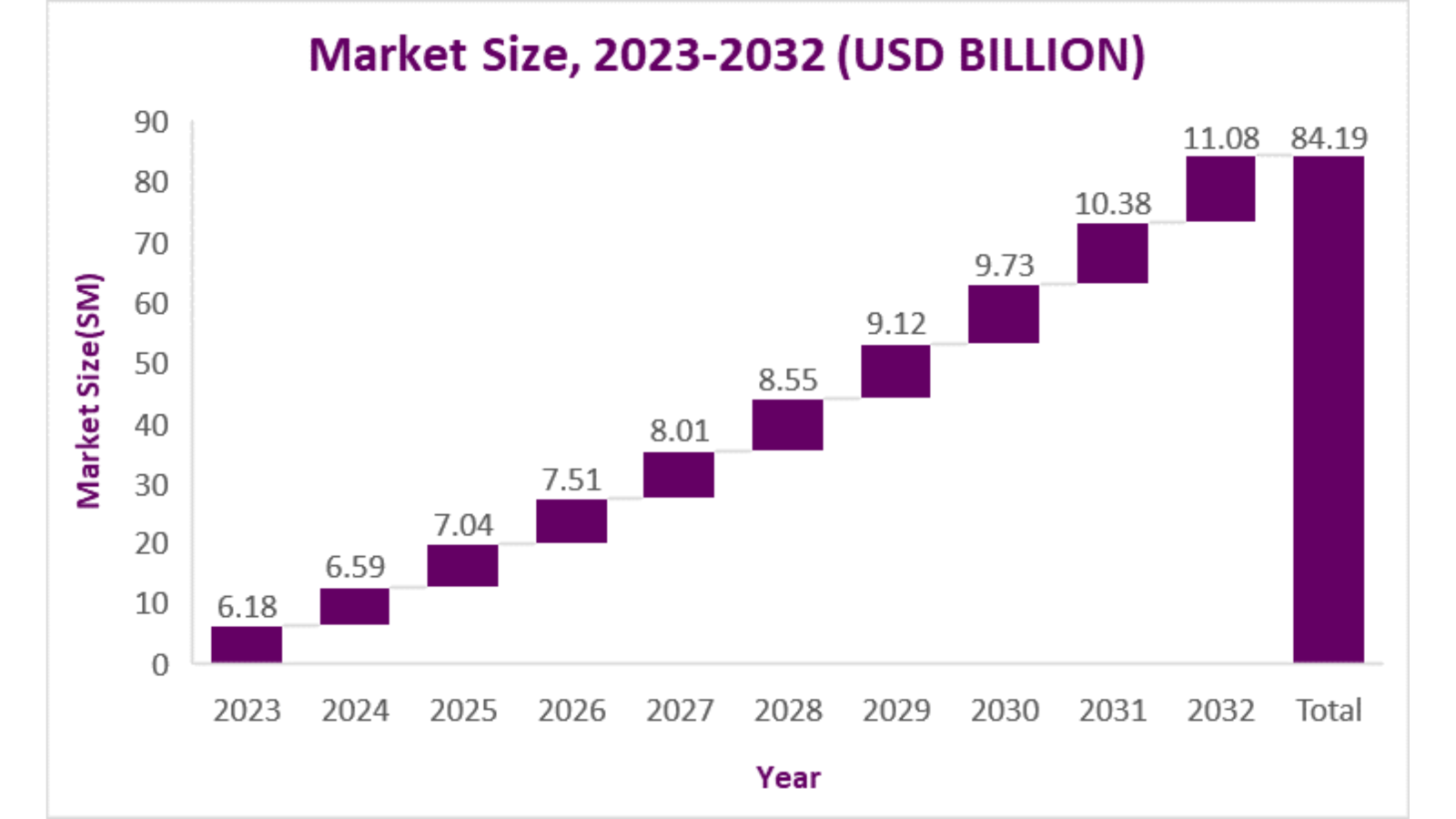
Management and Treatment2
Medications and surgeries are available for the treatment of ulcerative colitis. The therapies aim to put patients into remission
Medications include:
-
Aminosalicylates: It contains 5-aminosalicylic acid (5-ASA) that fights inflammation and helps control symptoms. Examples include mesalamine, balsalazide, and sulfasalazine
-
Corticosteroids: Deltasone (prednisone), Entocort EC and Uceris (budesonide) are some of the corticosteroids that are prescribed by healthcare providers but for short-term use due to their serious side effects.
-
Immunomodulators: They help stop the immune system’s attack on the colon. These medicines include Purixan, Purinethol (6-mercaptopurine), Azasan, and Imuran (azathioprine) or Trexall (methotrexate)
-
Biologics: These are made from proteins in living cells instead of chemicals. They’re for people with severe ulcerative colitis to calm their immune response
-
Janus kinase inhibitors (JAK inhibitors): Oral medicines that prevent the body’s enzymes (chemicals) from triggering inflammation
Surgery
Surgeries are accompanied by proctocolectomy, which involves the removal of the colon and rectum.
-
Proctocolectomy and ileal pouch: The proctocolectomy and ileal pouch are the common procedures in which the colon and rectum are removed but the anus is left intact. The surgeon then creates an ileal pouch, which is a section of the small intestine that attaches to the anus, and once it heals, this part of the small intestine functions as a new rectum, allowing it to pass stool normally
-
Proctocolectomy and ileostomy: If an ileal pouch is unattainable, the medical team may suggest a permanent ileostomy (i.e., one without an ileal pouch). A surgeon removes the colon, rectum, and anus. The surgeon then creates a hole in the abdomen that connects to an ileal stoma, an external pouch that holds waste
Product Dashboard
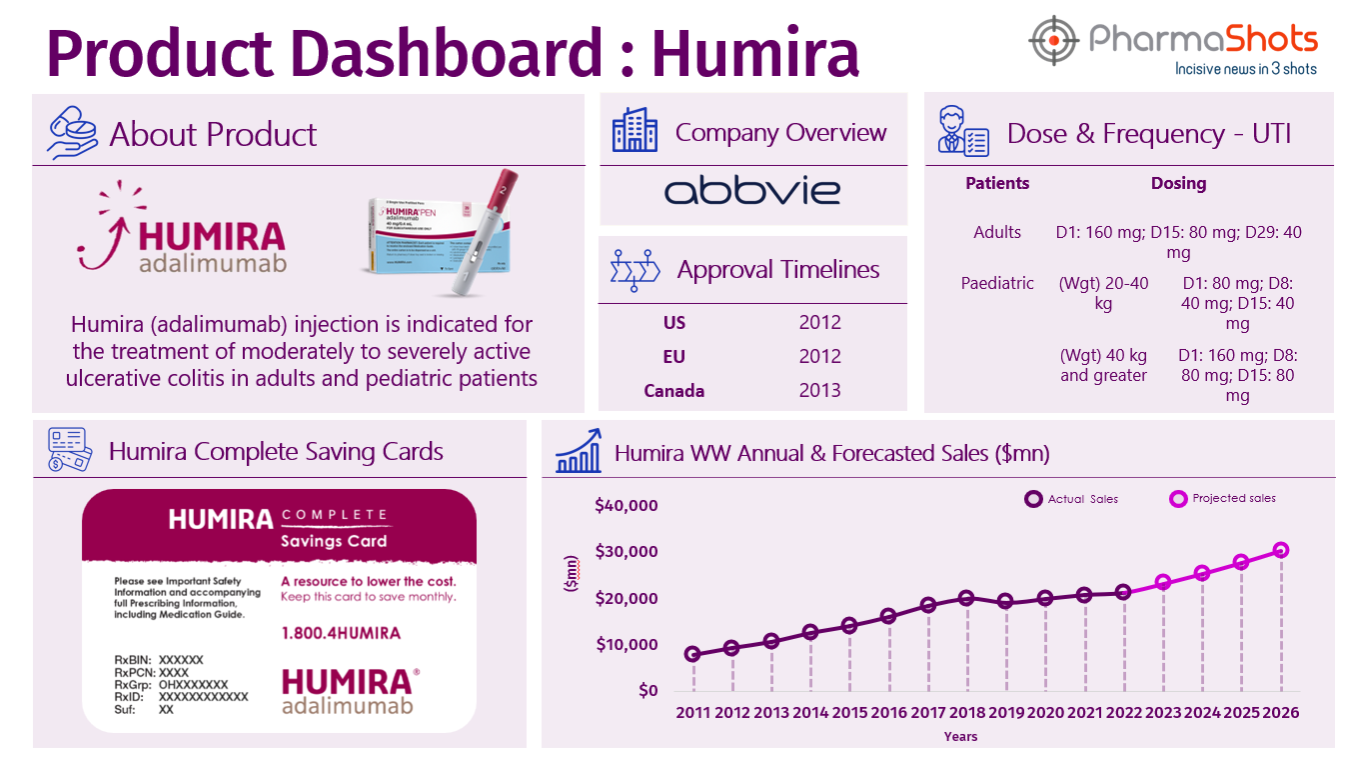
Key Players in the Market7, 8, 10, 11
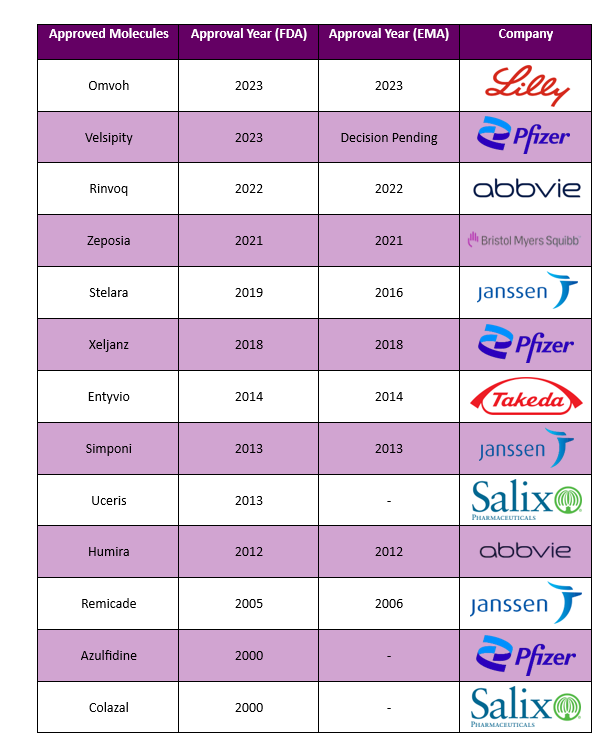
* The above-mentioned table depicts drug approval dates in descending order of the US
Clinical Trial Analysis6
Various pharmaceutical companies are working to develop new treatment options, either as monotherapy or in combination for ulcerative colitis. As of November 27, 2023, about 503 interventional clinical trials have been registered worldwide for ulcerative colitis. Some of the key molecules involved in the trials are ABBV-668 (Abbvie), VE202 (Vedanta Bioscience), JNJ-4804 (Janssen), and PF-06480605 (Pfizer).
Based on geographical distribution, the interventional and Industry sponsored clinical trials are classified in the below-mentioned graph in two groups based on their status i.e., active (recruiting, active, not recruiting, not yet recruiting and enrolling by invitation, suspended) and inactive (withdrawn, terminated and trials with unknown status). A maximum number of active trials is being conducted in the US and UK while a minimum of trials was reported in China and Australia (as represented in the graph)
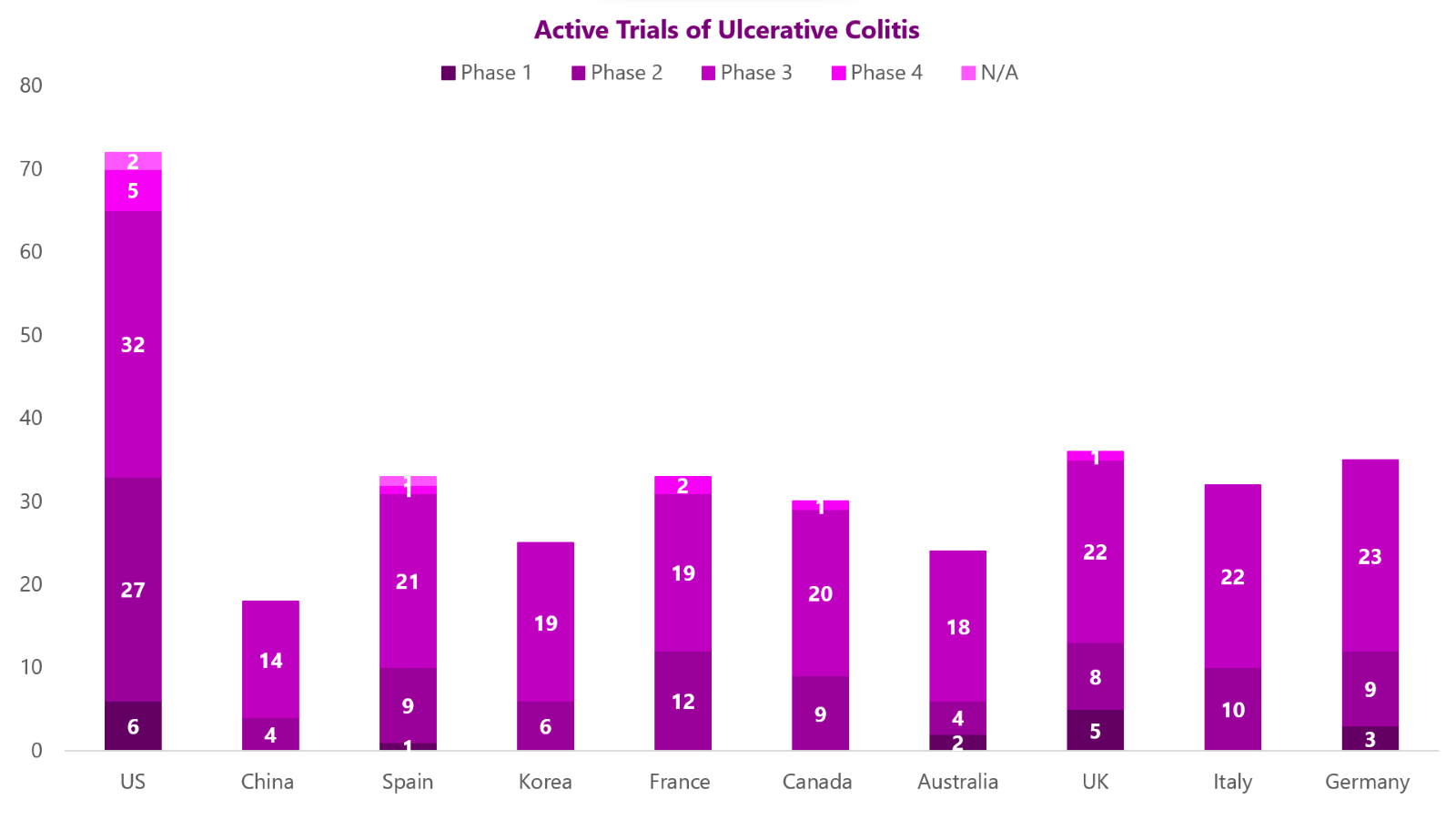
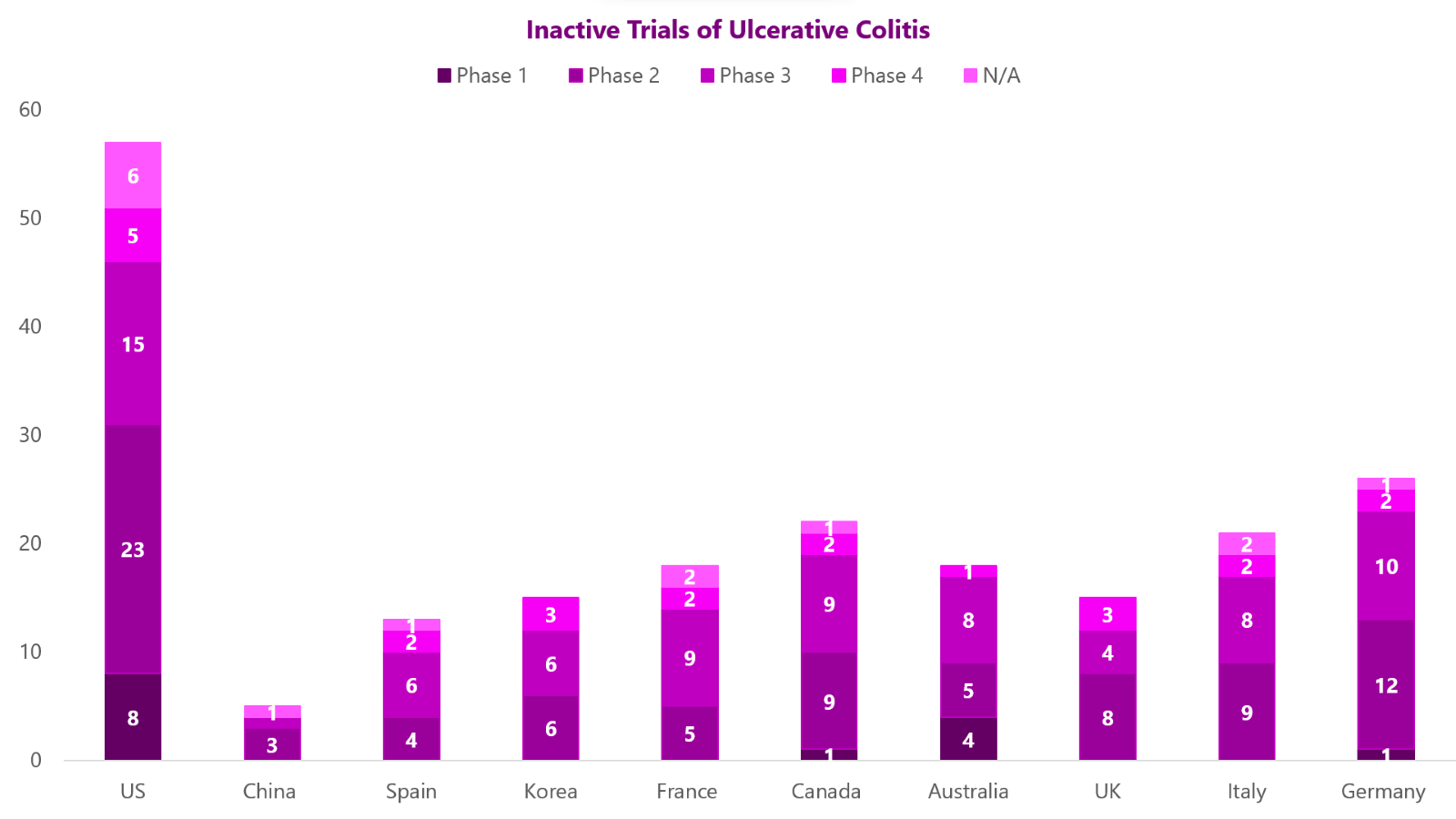
Patient Advocacy Groups (PAGs) for Ulcerative Colitis
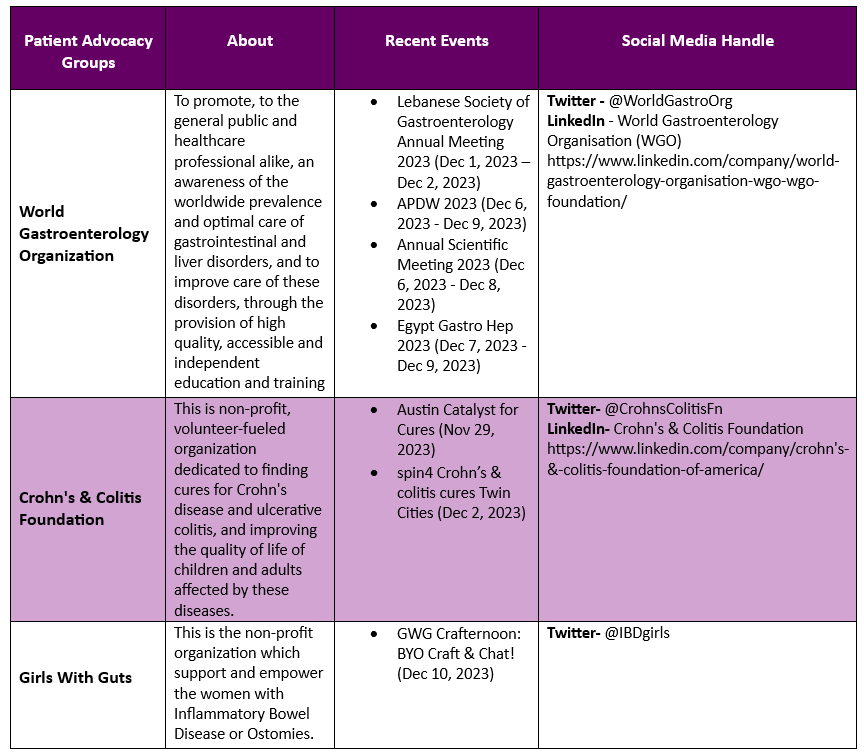
References
-
Mayo Clinic
-
Cleveland Clinic
-
NIDDK.NIH.gov
-
NCBI
-
The Lancet
-
ClinicalTrials.gov
-
Medical News Today
-
Center Watch
-
Market Data Forecast
-
EMA
-
FDA
Related Post: Disease of the Month- Osteoporosis
Tags

Disha was a content writer at PharmaShots. She is passionate and curious about recent updates and developments in MedTech and Pharma industry. She covers news related to clinical trial results and updates. She can be contacted at connect@pharmashots.com.








